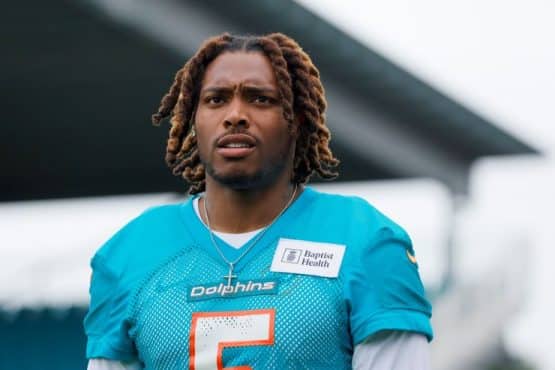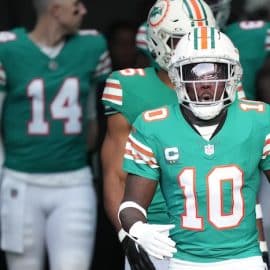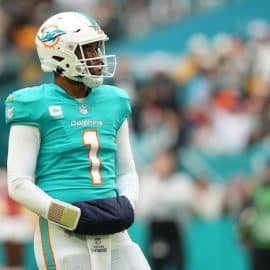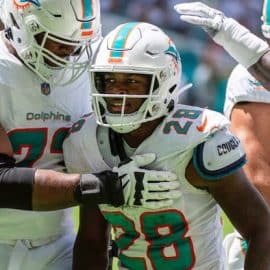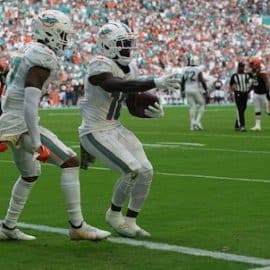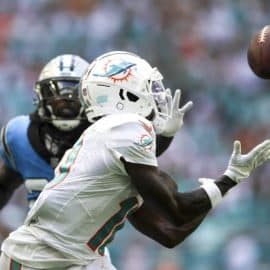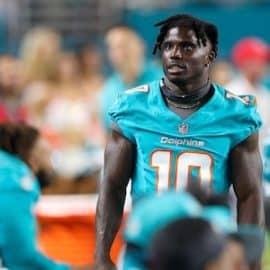It has been a thrilling offseason for all Dolphins fans. In fact, it's been a blogger's dream to be able to write so many positive articles and posts about this year's new and improved Miami Dolphins!
Reading and writing about the spending and spree by Jeff Ireland and owner Steve Ross’ commitment to winning has been a dream come true for this franchise that has spent the last 13 years with only two playoff appearances.
The Dolphins have retooled and revamped and gotten the fans excited again about Dolphin football conjuring memories of Marino to Clayton and Duper with Tannehill to Wallace and Hartline plus Gibson and Dustin Keller. Of course don’t count out the sleeper in the acorn that fell off the tree during the season in WR Armon Binns.
The momentum has spiraled into a frenzy of lofty expectations to not only win, but win the division and win a playoff game since The Fiedler era.
However, what the Dolphins do on the field offensively depends on one fundamental idea: offensive play calls.
Normally, the Dolphins last season ran everything through Mike Sherman and at times, the play calls looked like plain vanilla and brought about boring football that was last seen from the Dave Wannstedt or Sparano era.
With Mike Sherman and Joe Philbin putting the pieces together on offense, this season the brand of football aims to be quite exciting giving second year quarterback Ryan Tannehill several options including a new four wide formation.
The big questions next season are can Tannehill make the right call on third and long with a re-shuffled offensive line, new starting running back, and newly acquired wide receivers catching the ball and scoring red zone touchdowns.
Last season a lack of execution existed on 3rd and down and especially on third and short. Instead of walking back to the huddle with pride, the Dolphins offense was walking off as Pro Bowl snub Brandon Fields prepared to punt the ball. Those missed opportunities don't just land on the QB, but the play calls from the booth and executing the play to keep the drive going.
Play calling is an art form and Mike Sherman must make decisions quickly and allow his QB to improvise and make the best decision on the field. While the play caller is up above with a birds-eye view, the quarterback has the best view and can see the whole field based on his gut instinct. The QB is the only one who controls the play and can make or break a team’s chances for winning the game. Sherman needs to allow Tannehill to make a play call change when necessary.
Lastly, when Mike Sherman noticed that Tannehill couldn’t read up the middle blitz pressure he rolled him out playing to Tannehill’s strengths in throwing on the run. With this move, Tannehill became difficult to read and stop and thus it lead to more big plays downfield.
However, this season, Tannehill has to read this pressure and avoid getting hit in the pocket and find a window to throw through. Up the middle blitzes accounted for tipped passes in his first game versus Houston and every subsequent throw had an occasional tipped pass as the season wore on. Sherman must put Tannehill in position to make that play call change and Tannehill must read the defense better.
The biggest keys to Mike Sherman’s play calls will be his ability to mix it up and open it up, not be afraid to take shots down the field on more than 10 plays per game, and to let Ryan Tannehill show he has the goods to be the best QB that has been written about as the key to Miami vaulting into the playoffs this season and beyond.
Add The Sports Daily to your Google News Feed!

